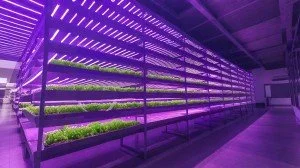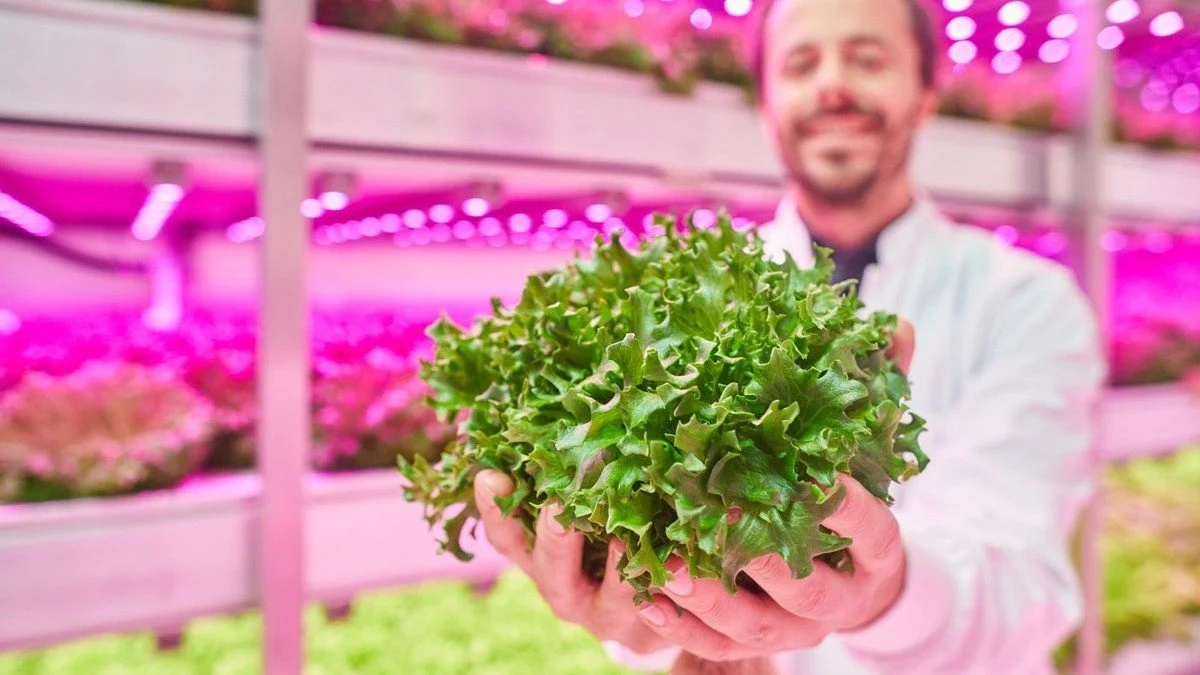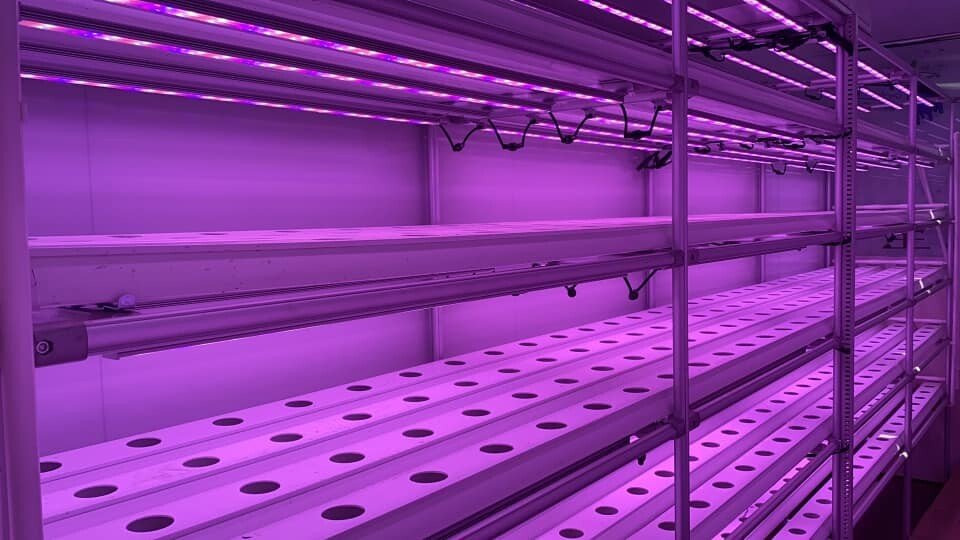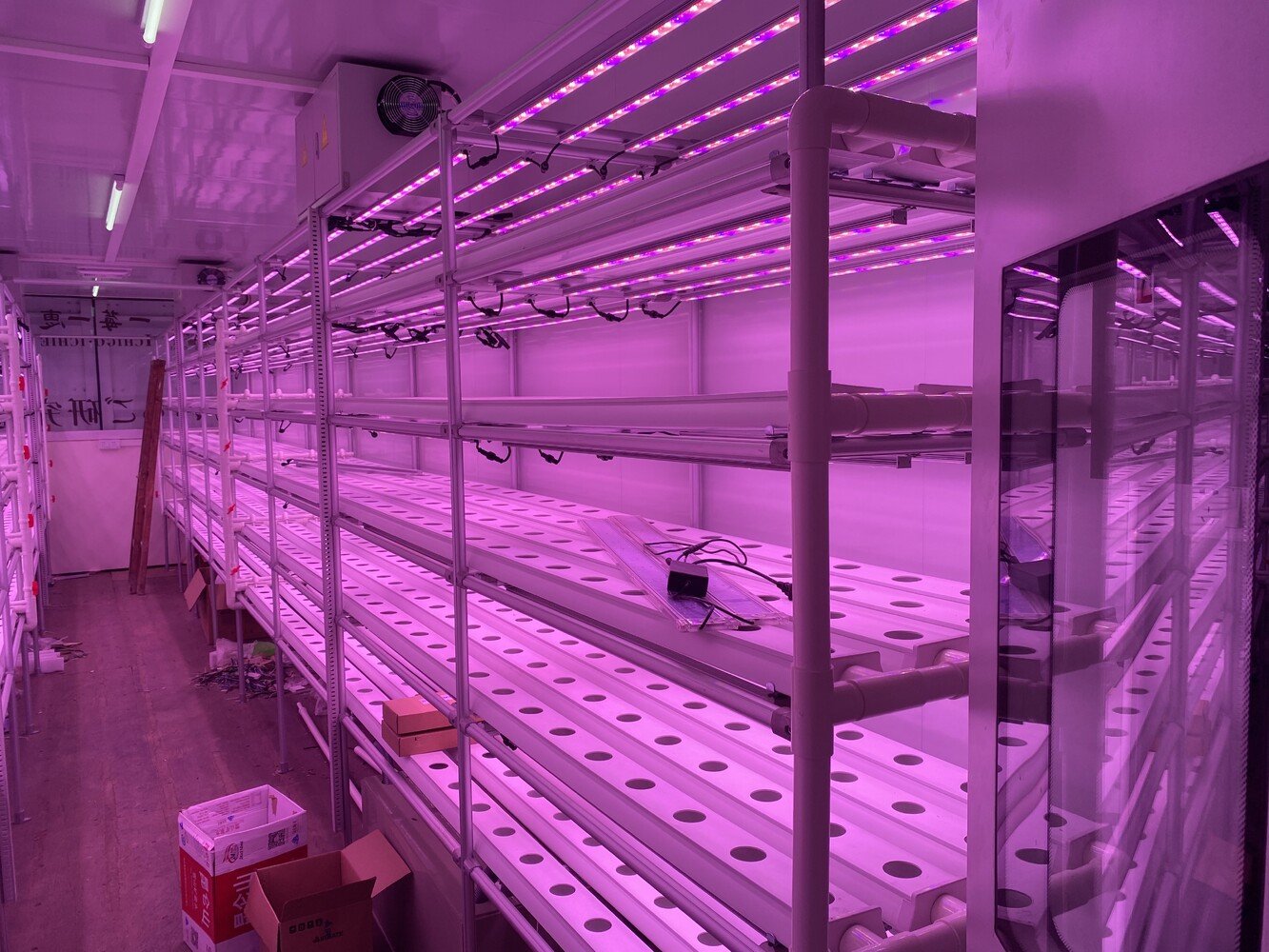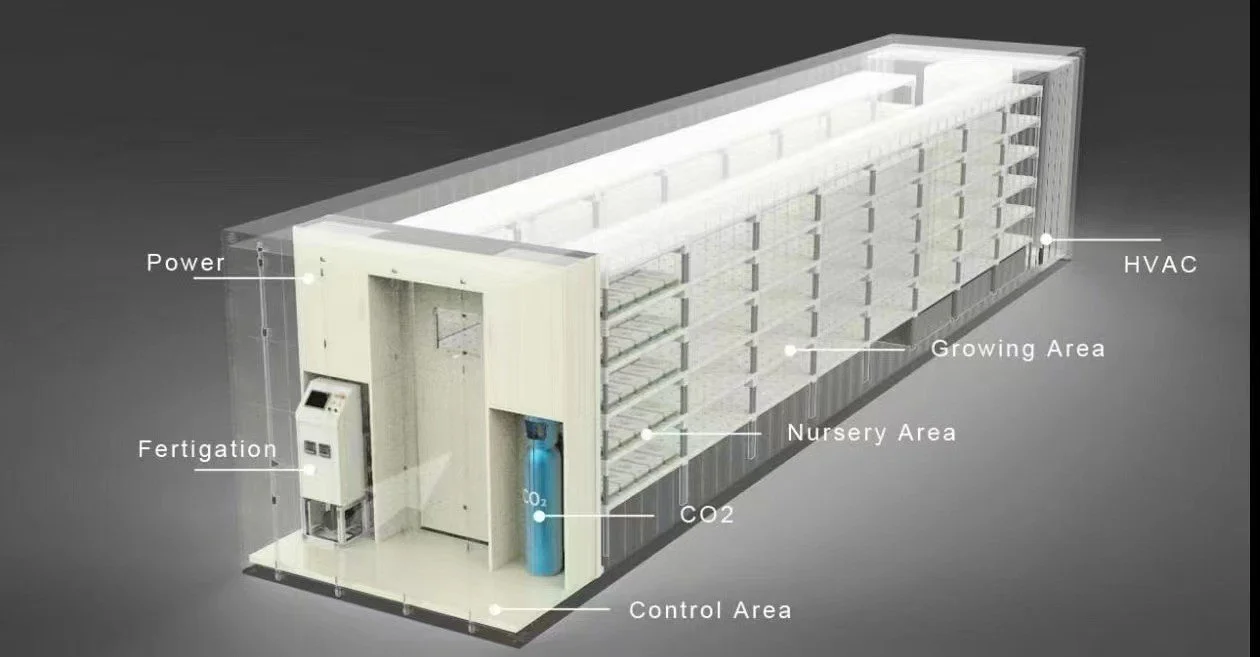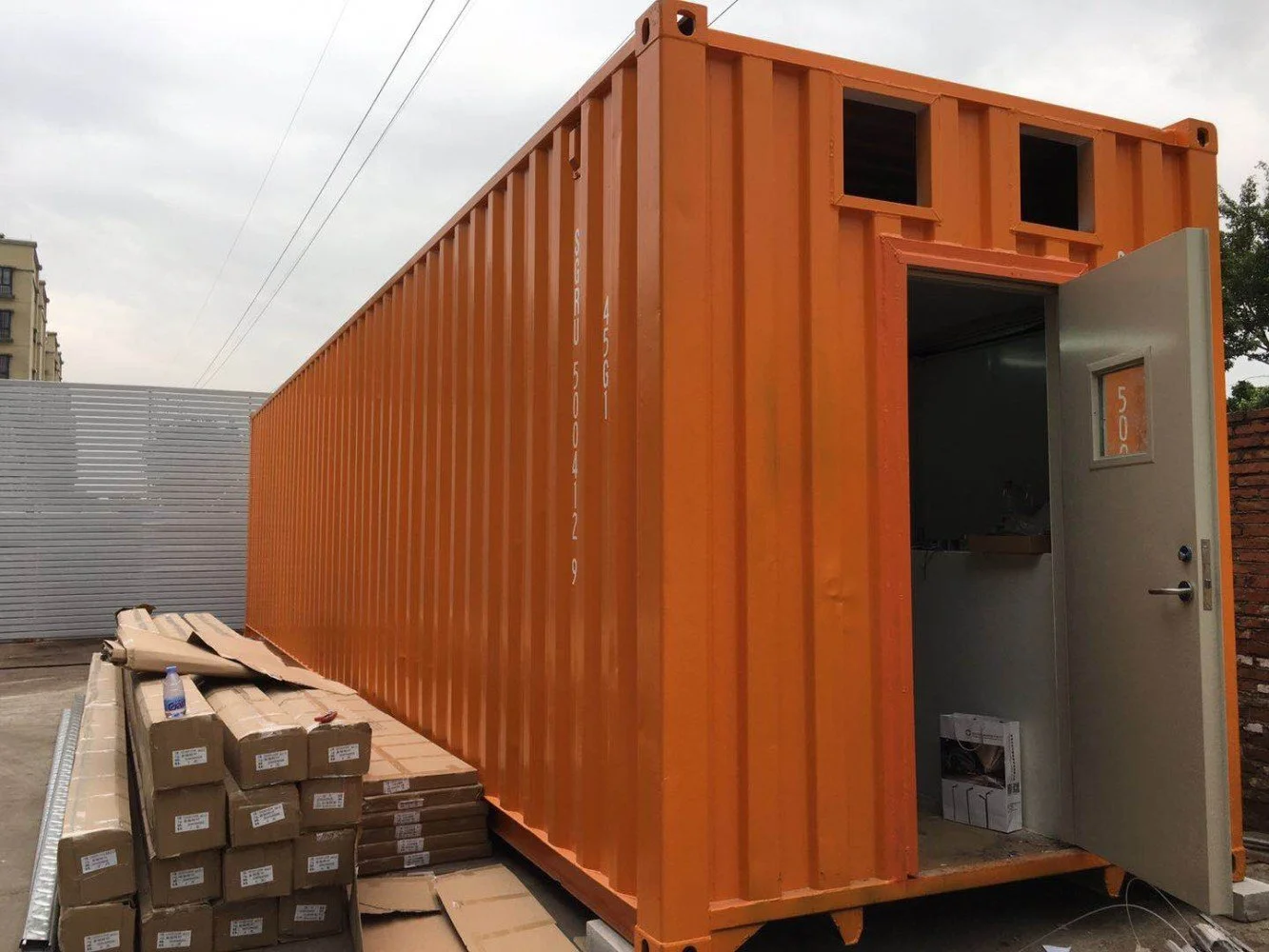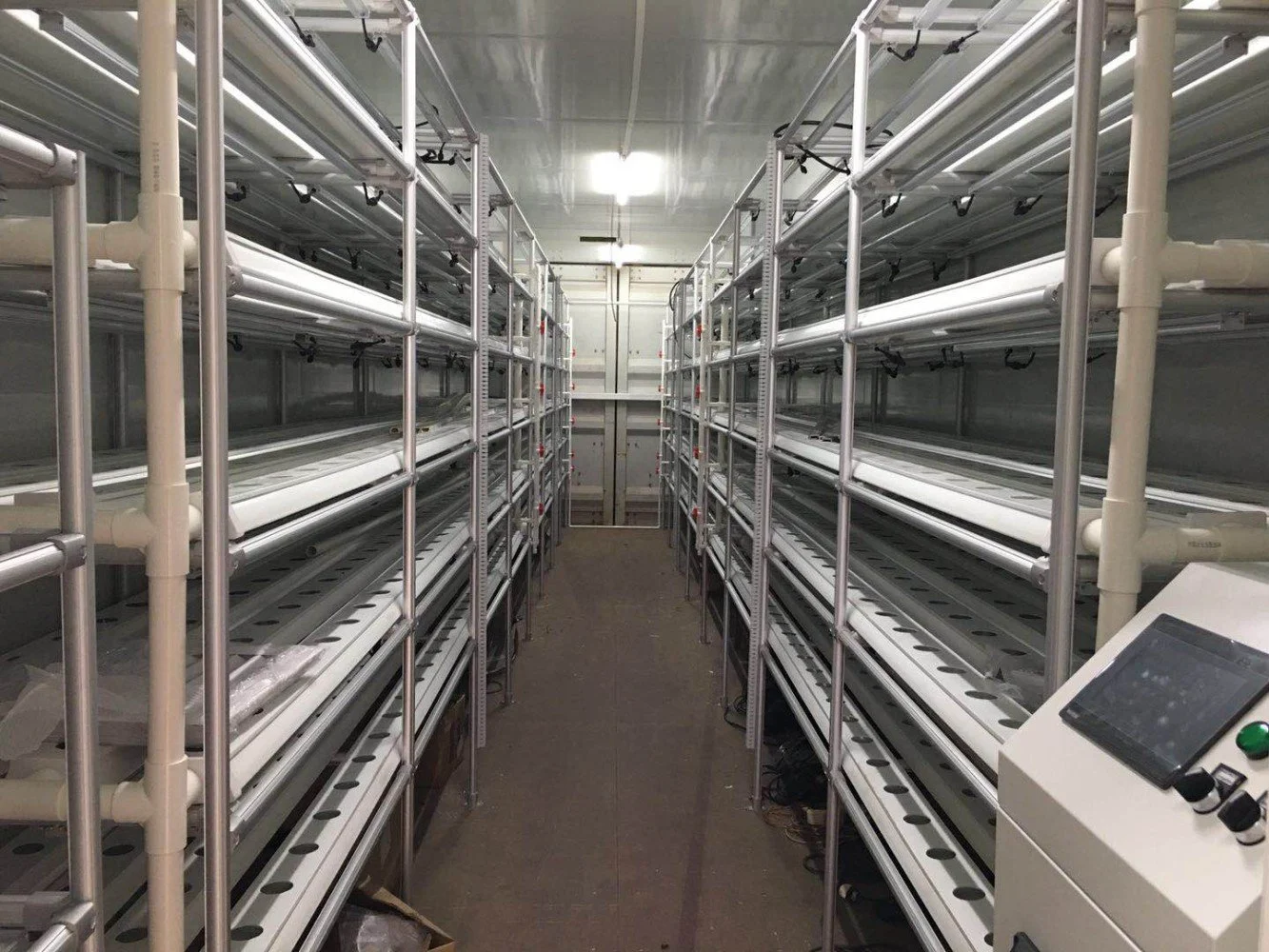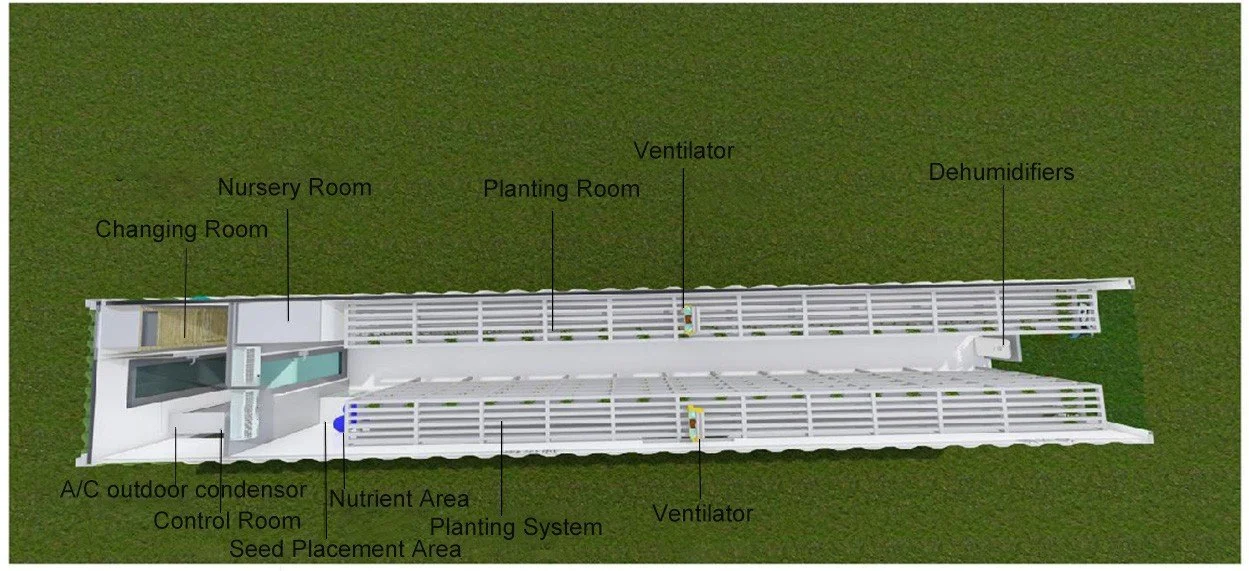The Detailed Analysis of 40-Foot Container Vertical Farming - A Comprehensive Guide for Beginners - By Grow4Max
Turnkey Solution Provider For Indoor Vertical Farming - By Grow4Max
Co-Founder ★ CEA Turnkey Solutions For Vertical Farming, Hydroponics, Aquaponics and Greenhouses ★ LED Grow Lights Expert - 500+ Projects - Served 13 Years in CEA Vertical Farms, Hydroponics and Agriculture
May 27, 2025
👋 As a vertical farming project service provider with 13 years of industry experience, I've been involved in over 200 vertical farm projects across more than 50 countries worldwide. Today, I'm excited to share an in-depth look at 40-foot container vertical farming, covering everything from the essential facilities and equipment to operation, application, and crucial tips for growers. Let's dive in--By Carter Xie
1. 🌟 LED Grow Lights: The Heart of Indoor Growth
LED Grow lights are a game-changer in container vertical farming.
- Spectrum: They can be customized to emit specific wavelengths of light that plants need most for photosynthesis. For example, blue light promotes vegetative growth, while red light is essential for flowering and fruiting.
- Energy Efficiency: LEDs consume significantly less energy compared to traditional lighting options like high-pressure sodium lamps, reducing your operational costs.
- Heat Management: Unlike some other lights, LEDs generate less heat, minimizing the risk of overheating plants and reducing the load on your cooling systems.
- Installation: They are lightweight and can be easily mounted above or around the plant growing areas. Ensure proper spacing to provide uniform light coverage.
2. 📦 Plant Growing Racks: Optimizing Space
Plant growing racks are designed to make the most of the limited space inside the container.
- Material: Typically made from durable materials like stainless steel or powder-coated metal, they are resistant to rust and corrosion, ensuring a long lifespan.
- Configuration: Racks can be multi-tiered, allowing you to grow multiple layers of plants vertically. Some are adjustable, enabling you to customize the height between tiers according to the type of plants you're growing.
- Stability: Ensure that the racks are firmly anchored to the container floor to prevent tipping, especially when the plants reach maturity and become heavier.
3. 💧 Irrigation System: Precision Watering
A reliable irrigation system is crucial for the health of your plants.
- Types: Drip irrigation systems are commonly used in container farms. They deliver water directly to the plant roots, minimizing water waste and reducing the risk of fungal diseases caused by wet foliage.
- Automation: Incorporate automated timers and sensors. These can monitor soil moisture levels and deliver water only when needed, ensuring consistent and efficient watering.
- Maintenance: Regularly check for clogs in the drip lines and clean the filters to prevent blockages that could disrupt the water flow.
4. 🌱 Nutrient Solution System: Feeding Your Crops
The nutrient solution system provides plants with the essential elements they need to thrive.
- Composition: The nutrient solution typically contains a balanced mix of macronutrients (such as nitrogen, phosphorus, and potassium) and micronutrients (like iron, zinc, and manganese). The exact ratios can vary depending on the type of plants being grown.
- Delivery: It can be delivered through the same drip irrigation system used for water. You can use a nutrient mixing tank to prepare the solution and a pump to distribute it to the plants.
- Monitoring: Regularly test the pH and electrical conductivity (EC) of the nutrient solution. Adjust the pH as needed to ensure optimal nutrient uptake by the plants.
5. 🌡️ Temperature and Humidity Management Control System: Creating the Ideal Environment
Maintaining the right temperature and humidity levels is vital for plant growth.
- Temperature: Most plants grow best within a specific temperature range, usually between 65°F to 75°F (18°C to 24°C). Install temperature sensors throughout the container and use heating or cooling systems to regulate the temperature as required.
- Humidity: Humidity levels should also be carefully controlled. High humidity can lead to fungal diseases, while low humidity can cause plant stress. Dehumidifiers or humidifiers can be used to maintain the ideal humidity range, which is often around 40% to 70%.
- Ventilation: Adequate ventilation helps to circulate air, distribute heat and humidity evenly, and remove stale air. Fans can be installed to improve air movement within the container.
6. 🫧 Carbon Dioxide Control System: Boosting Growth
Carbon dioxide (CO₂) is essential for photosynthesis.
- Levels: In a closed container environment, CO₂ levels can quickly deplete as plants consume it. Monitoring and supplementing CO₂ can significantly enhance plant growth. The optimal CO₂ level for most plants is around 800 - 1200 parts per million (ppm).
- Supplementation: CO₂ can be supplied using tanks or generators. Ensure proper distribution of CO₂ within the container to ensure all plants have access to it.
- Safety: When using CO₂ supplementation, install CO₂ sensors to prevent levels from becoming too high, which can be dangerous for both plants and humans.
📝 Tips for Growers
- Start Small: If you're new to container vertical farming, start with a small-scale project to learn the ropes before scaling up.
- Research Your Crops: Different plants have different requirements. Understand the specific needs of the crops you want to grow and adjust your systems accordingly.
- Regular Monitoring: Continuously monitor all the systems (lights, irrigation, nutrients, environment) to catch any issues early and make timely adjustments.
- Learn from Experience: Keep detailed records of your farming activities, including plant growth, system performance, and any problems encountered. Use this data to improve your future operations.
Whether you're a novice in the world of agriculture or a seasoned pro looking to explore new farming methods, 40-foot container vertical farming offers a sustainable and efficient way to grow crops. By understanding and properly utilizing these essential facilities and equipment, you'll be well on your way to a successful vertical farming venture! 🌿
Let's Grow Together
Cheers~
#Hydroponics #Verticalfarming #Farming #Indoorgrowing #Aeroponics #Hotriculture #Growsystem #Urbanfarming #Garden #LEDlighting #Grow4max #CEA #Agriculture #Agritech #Smartgarden #Food #Futurefood #Agro #SmartAgriculture #StrawberryFarming #SustainableAgriculture #ledgrowlights #growlightsled #plantgrowlights #ledgrow #greenhouse #FarmToTable #AgTech #ModernFarming #FruitFarm


